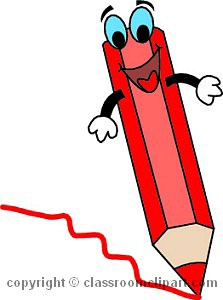Assessment Plan

 Use links within the text to view Worksheets, Teacher Rubric, and Checklists.
Use links within the text to view Worksheets, Teacher Rubric, and Checklists.
Pre-assessment: (See Money Sort Worksheet and Blank Grading Checklist)
Before the lesson begins students will be given the Money Sort worksheet. This assessment tool is used to assess the student’s prior knowledge and recall of the coin values and coin names. Since this lesson is the culminating lesson for the unit on money, students have had exposure to each of the four coins over the past four days and therefore should be able to complete this pre-assessment successfully. After grading the Money Sort Worksheet using the checklist, I determine and identify what students are still struggling to identify the coins and the value of each coin. Then based on this information I grouped the students for the lesson by placing students of varying abilities in each group.
Formative assessment: (See Coin Sort Worksheet and Coin Sort Rubric)
This worksheet is part of the Independent Practice for this learning experience. Students work in groups of four, each student has their own worksheet which they use to record their findings. While students are working, the teacher walks the room performing informal assessments by asking each group questions about what they are doing, referring to the worksheet and work mats, providing remediation as necessary and documenting what remediation was necessary and with whom it was necessary. A teacher- made rubric was used to evaluate the students work during the Coin-Sort Activity.
Summative assessment: This assessment takes place during the closure activity. As a group we discuss how much (value/worth$) of each coin we have, compare it to the amount/number of the coins, and then determine if it is better to have more of one type of coin than another. Students needing additional help will receive help form the teacher during math centers in the morning.
The Coin Sort Rubric is aligned to the NYS Standards and Performance Indicators as follows:
Performance Indicator 1.M.4: Under mathematical concepts, it checks the students’ ability to recognize/identify the coins, know the coin names as well as know the value of each coin.
Performance Indicator K.S.3 and PK.S.3: Under Use of Manipulatives, it checks the students’ ability to sort the coins provided, count the number of each coin, and find the total worth of the coins in each piggy bank.
Since this LE is designed for a kindergarten classroom, the assessment is done to see what students are capable of doing/ or what they know. Letter and number grades are not given in kindergarten and students’ performance is not based on individual assignments. Instead students are assessed on their overall knowledge and application of specific skills, and are given the following:
Achievement Key:
4 - Mastery: Performance and achievement indicate that student is exceeding grade level performance standards.
3 - Proficient: Performance and achievement indicate that student is successfully meeting grade level performance standards.
2 - Basic Proficiency: Performance and achievement indicate that student is approaching but not yet meeting grade level performance standards.
1-Below Standard: Performance and achievement indicate that student is not meeting grade level performance standards.
Knowledge/Skill Development Key:
E- Exceeds: The student consistently and independently applies the skill beyond or in advance of the end-of-year grade level expectations.
S - Secure: The student has achieved proficiency in the indicated skill. The student is consistently able to independently and accurately apply the skill.
D - Developing: The student is making progress towards proficiency in the indicated skill. The student demonstrates the ability to apply the skill but still requires some teacher support and direction.
B - Beginning: The student has not met the performance standard. The student requires substantial teacher support and direction.
Students take part in the assessment by following and completing the Student Checklist during and after they work in groups.
